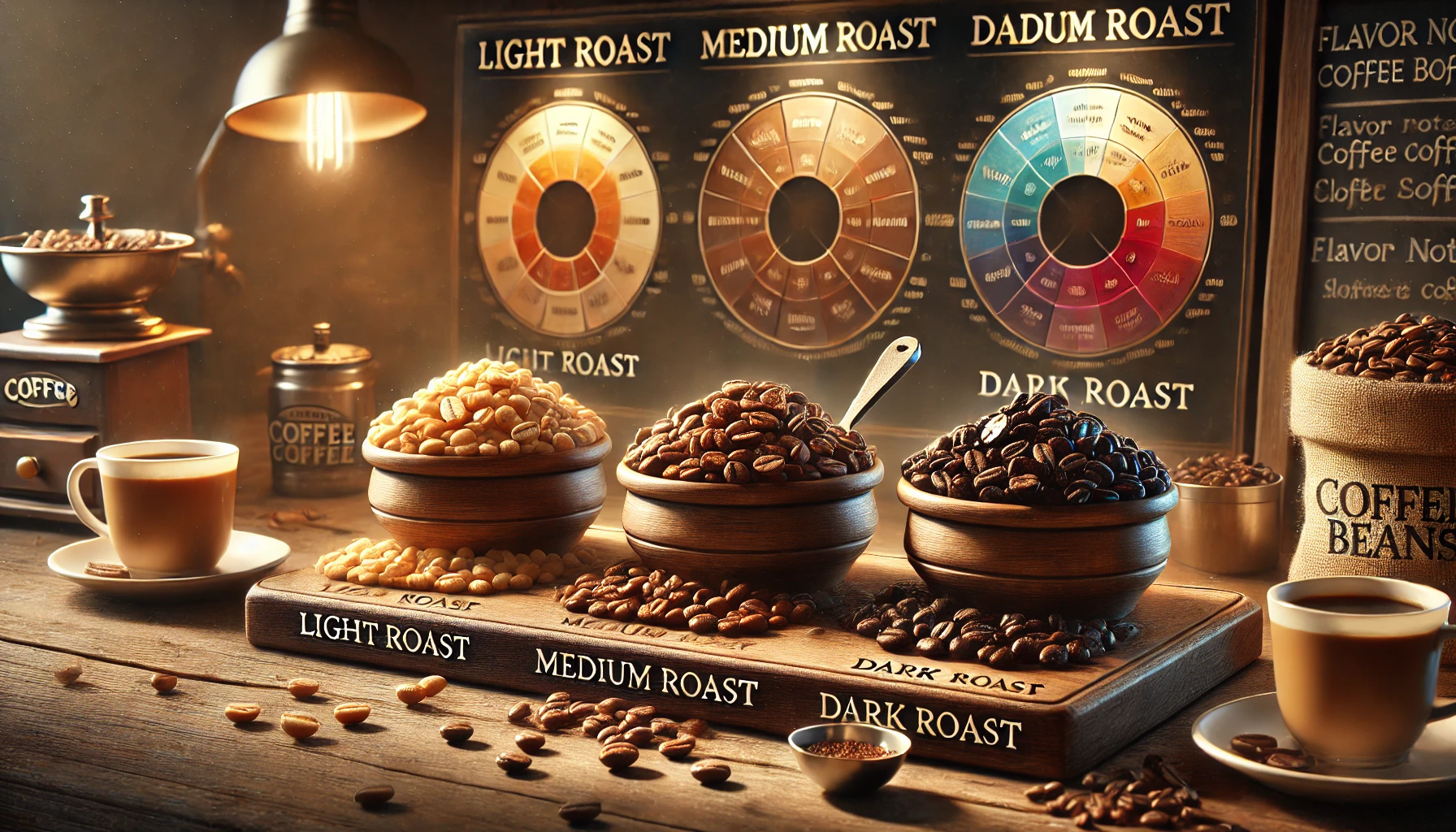When choosing coffee, one of the first decisions you’ll face is the roast level: light, medium, or dark. These simple labels hide a surprising amount of complexity—and they have a huge impact on your coffee’s flavor, aroma, body, and even caffeine content.
In this guide, we’ll break down the differences between light, medium, and dark roasts, explain how each is made, and help you choose the right roast for your taste and brewing style.
What Is Coffee Roasting?
Roasting is the process of transforming green coffee beans into the brown, aromatic beans we brew.
During roasting, beans go through:
- Physical changes: expansion, cracking, darkening
- Chemical reactions: including the Maillard reaction and caramelization
- Flavor development: sugars break down, acids are altered, and oils emerge
Roast level is determined by roast time and temperature—how long and how hot the beans are roasted.
Light Roast
Characteristics:
- Light brown color
- Dry surface (no oils)
- Preserves more of the bean’s original flavor
- Often referred to as “blonde roast” or “cinnamon roast”
Flavor Profile:
- Bright, acidic, and complex
- Fruity, floral, and tea-like notes
- More noticeable origin characteristics (terroir)
Best Brewing Methods:
- Pour-over (V60, Chemex)
- AeroPress
- Cold brew (for fruity, light results)
Caffeine Content:
Contrary to popular belief, light roasts generally have slightly more caffeine by weight than dark roasts—because they are denser and retain more mass after roasting.
Medium Roast
Characteristics:
- Medium brown color
- Dry surface or slight sheen of oil
- Balanced between acidity and body
- Commonly called “city roast” or “American roast”
Flavor Profile:
- Smooth, rounded flavor
- Notes of caramel, chocolate, nuts, and mild fruit
- Less acidity than light roasts but more clarity than dark
Best Brewing Methods:
- Drip coffee
- French press
- Espresso (for a balanced, sweet shot)
Caffeine Content:
Moderate—slightly less than light roast by volume, but negligible for most drinkers.
Dark Roast
Characteristics:
- Dark brown to almost black
- Shiny, oily surface
- Strong, bold aroma
- Also known as “full city,” “espresso,” or “French roast”
Flavor Profile:
- Smoky, bitter-sweet, low acidity
- Notes of dark chocolate, spice, and toasted nuts
- Roasty flavor dominates origin characteristics
Best Brewing Methods:
- Espresso machine
- Moka pot
- French press
Caffeine Content:
Slightly less than light roast by weight—but since dark roast beans are less dense, a scoop of dark roast may have less caffeine than light roast.
Visual Comparison of Roasts
| Roast Level | Color | Oil on Surface | Acidity | Flavor Notes |
|---|---|---|---|---|
| Light | Light brown | No | High | Citrus, floral, fruity |
| Medium | Medium brown | Minimal | Moderate | Chocolate, caramel, nutty |
| Dark | Dark brown/black | Yes | Low | Smoky, bitter, toasted, bold |
How Roast Level Affects Brewing
Each roast behaves differently when ground and brewed:
- Light roasts require more precise brewing and longer extraction to bring out full flavor
- Medium roasts are forgiving and versatile—great for most brewers
- Dark roasts extract quickly, ideal for espresso or milk-based drinks
Adjust your grind size, brew time, and water temperature depending on roast level to avoid sourness (under-extracted light roasts) or bitterness (over-extracted dark roasts).
Which Roast Should You Choose?
It depends on your personal taste and brewing habits.
- Like brightness, fruitiness, and origin expression? Try light roast
- Want balance, sweetness, and versatility? Go with medium roast
- Crave bold, intense, or smoky flavors? Opt for dark roast
Also consider how you take your coffee:
- With milk or cream? Dark roasts hold up well
- Black or brewed manually? Light or medium roasts offer more nuance
Roasting at Home
For those who want full control, home roasting is also an option. Tools like:
- Popcorn poppers
- Home roasters
- Cast iron pans
…allow you to explore roast profiles yourself—but be prepared for a learning curve and lots of trial and error.
Final Thoughts: Roast to Match Your Mood
Roast level is more than just color—it’s a guide to how your coffee will taste, feel, and perform in your cup. Whether you love the citrus zing of a light roast or the rich depth of a dark one, understanding roast levels helps you shop smarter, brew better, and enjoy coffee more fully.
So next time you choose beans, don’t just go by looks—go by flavor, method, and mood. The perfect roast is the one that fits your moment.
